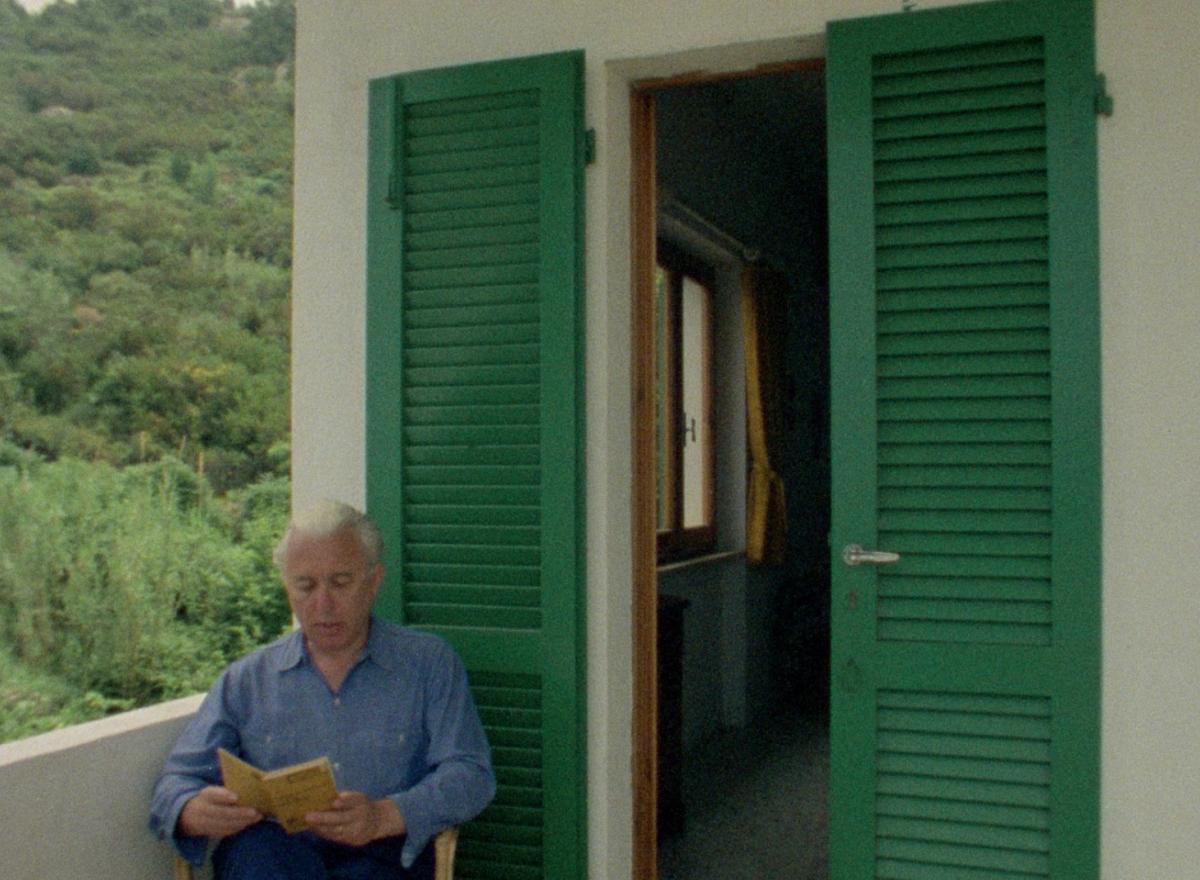Fortini/Cani (1976, 83 min.)

Absolute in its Relativity
As he would later recount in a note to Straub from 1978, Franco Fortini wrote I cani del Sinai [The Dogs of the Sinai] in a state of furious indignation – “with muscles tensed, in extreme rage” – in the summer of 1967, in the immediate wake of the Six Day War. The Marxist poet and literary critic, son of a Jewish father and a Catholic mother, was wrenched in disgust not only at the depredations of the war itself, which resulted in the occupation of the West Bank, Gaza Strip, Golan Heights and the Sinai peninsula, but also at the sanctimonious hypocrisy of the majority of Italian bourgeois intellectuals, whose prevailing “anti-Arab zeal” unnervingly echoed the dehumanising rhetoric that the Mussolini regime had deployed against Italy’s Jewish population.
In Fortini/Cani (1976), the third in a trilogy of films treating questions of Jewish history and identity, Huillet/Straub chose to film Fortini in the act of reading his own words, nine years after they were committed to the page. The film is the ultimate form of cinematic adaptation, perhaps, but it is also striated by Huillet/Straub’s own incursions, independent of the source text. In many cases, these consist of archetypal examples of the “plan straubien” that has become a cornerstone of their aesthetic: prolonged static or panning shots showing landscapes, the streets of Florence, or monuments to anti-fascist resistance.1 Less emblematic are the numerous reproductions of newspaper articles in Fortini/Cani, but these can be just as salient for the viewer. In one such insert, late in the film, a camera pans silently across a table, giving a historical overview of the Jewish and Arab populations in Palestine. From 1919 to 1948, 1950 and 1961, the Jewish population inexorably rises from 56,000 to 665,000, 1,203,000 and 2,155,551. Meanwhile, after an initial rise from 660,000 to 1,232,000, its Arab counterpart drops precipitously: to 385,000 and then 280,000. In the space of little more than a decade, close to a million Palestinians, roughly 80% of the pre-1948 Arab population, have disappeared: murdered, displaced, dispossessed.2
Shots like this may not commonly be considered as examples of the plan straubien, but the numbers shown on screen possess the same incontestable reality to them, the same évidence. Like the monuments, streets and fields elsewhere in the film, they are there. Behind these figures – as much as the Zionist movement may try to deny it, and as much as anybody expressing solidarity with the Palestinian cause may be harassed, politically ostracised and baselessly slandered as antisemitic – lies the trauma suffered by an entire people.
Here, in black and white, is the statistical reality of genocide. “The truth exists,” as Fortini himself writes, “absolute in its relativity.”
- 1Critics such as Jean-Claude Bonnet have highlighted these images as “telluric, geological, geophysical” sequences, in which “the landscape is given to be read as place of inscription of struggle, empty theatre of operations”. Jean-Claude Bonnet, “Trois cinéastes du texte,” Cinématographe 3 (October 1977), 3.
- 2The table is a clipping from page 3 of the June 14, 1967, issue of L’Unità, the daily newspaper of the Italian Communist Party, accompanying a series of maps showing the expansion of Israeli-controlled territory between 1948 and 1967.
Image from Fortini/Cani (Jean-Marie Straub & Danièle Huillet, 1976)
With thanks to Oscar Pedersen, Viktor Retoft and Balthazar.
This article was originally published in Balthazar no. 9, 2023, dedicated to the work of Danièle Huillet and Jean-Marie Straub.

